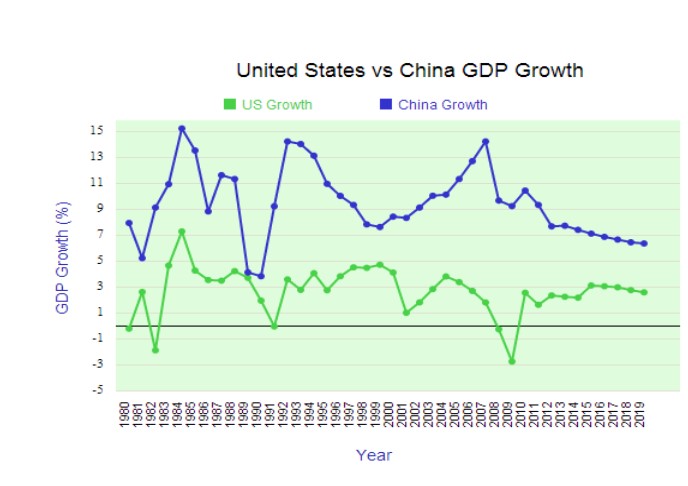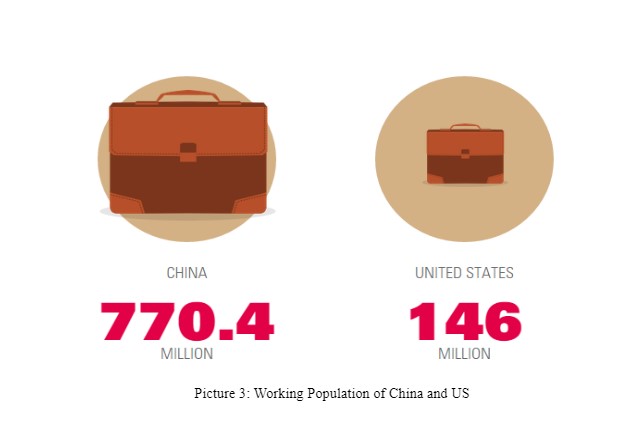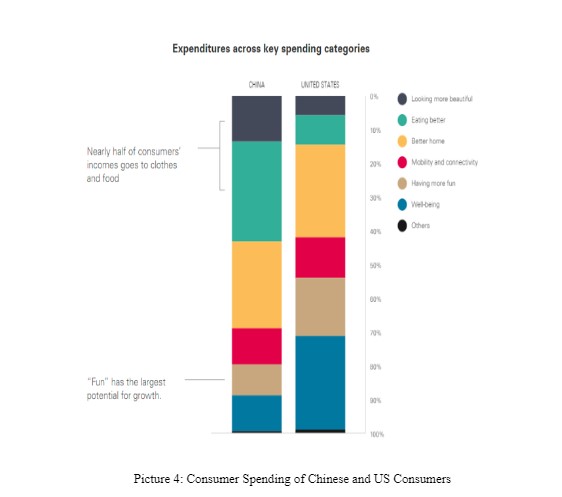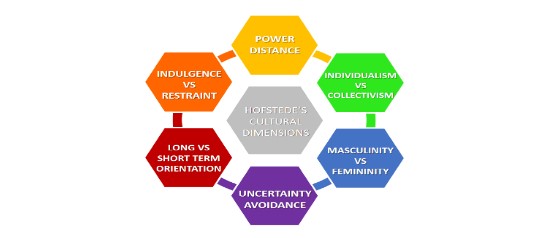OfferGet 10% off on Dissertation, Assignments, Essays, Thesis
The major purpose of the discussion is to analyse the difference in culture of two countries in a critical manner. It is followed by using an example of one company operating in the selected country and how the selected company adapted its products and services to the local culture. The selected countries are USA and China and the preferred company is Apple. The reason behind selecting China and USA is based on the notion that the former is developing whilst the later is a developed nation. However, considering the sources and resources of China, it has become a center of attraction for a number of global companies and Apple is one of them. The first part of the discussion revolves around the brief discussion on the characteristics of the chosen countries and analysing social and cultural differences in a critical manner. This will be followed by analysing the adaption of products or other techniques to the local culture.
Desjardins (2015) stated that the US economy is the world largest in terms of revenue. It is also one of the most technologically advanced nations where the market-oriented economy has enabled individuals and companies to take decisions in terms of facilitating business advantages. The per capita GDP of US is ranked 10th. On the other hand, the China has moved from the close economy to a market-oriented economy and has opened doors for innovation and technologies. The manufacturing industries have played a major role in shaping the economic environment of the nation. China also became the largest exporter in the world in 2010 and with manufacturing prowess continues to dominate developed as well as developing countries in terms of offering skilled and cheap labour along with infrastructure. The GDP of US was $15 trillion in 2009 whilst that of China was $5 trillion and still China is assumed as one of the fastest growing nations in the world (Nation Master, 2010).
Even though, China has been facing issues related to inflation and unemployment, the same is applicable in regards to the US where the unemployment rate has been increasing especially after the 2008-1010 financial crisis. Even though, the US continues to enjoy the status of one of the most powerful countries in the world, China is believed to be growing at a stupendous pace having all the potential to surpass US in coming few decades.

The above picture states that the GDP growth of China has been quite impressive and is expected to perform better than that of the US. The annual GDP growth of China is quite impressive compared to the US. This is mainly because of the rise in exports and impressive performance of the manufacturing industry embedded with influx of FDIs.
In terms of the working population, China has edge especially because of the large population. Currently 770 million people work in China whilst only 146 million work in the US. This gap is solely because of the difference in the population (Soffel, 2015).

In terms of the consumer spending, it was found that majority of the Chinese consumers spend on clothes, food, and looking more beautiful options, whilst majority of the US consumers spend their income on well being and having more fun. This is mainly because of the difference in the income of people in both countries. However, the level of income of Chinese people is expected to rise in coming years that will also push demand for electronics especially smartphones and technology enabled products.

The spending trend of Chinese people will change in the future as in 2030, more than 200 million people will be above the age of 65 years. On the other hand, US will be having only 75 million. This will increase the demand for well being and healthcare industry. At the same time, e-commerce has been one of the most innovative platforms where majority of the US and Chinese consumers spend their earnings. Overall, there is a difference in the consumer expenditure that is mainly because of the difference in the earning and availability of disposable income (Soffel, 2015).
Coelho (2011) stated that there is a difference in the cultural attribute of China and US. The ethnic culture of China revolves more around building relationships but the US favours individualism characteristics. The business culture in China is quite orthodox embedded with a reserve approach but the US enjoys open nature of communication.
One of the key attributes of Chinese culture is in the form of respecting the culture, people, and relationship. The notion of individual benefit does not prevail. On the other hand, relationships are not offered much of value when it comes to business transactions in the US and the focus is majorly on contracts, success, achievements, and wealth. The priority is always business for the US people whilst Chinese have mixed priorities. Even though, there is a huge cultural difference between the US and Chinese people, there is also one thing common in the form of openness for diversity.
Hofstede cultural dimension is a framework for cross-cultural communication describing the effects of society’s culture on the values and beliefs of members. The pictorial overview has been presented as follow and the same has been discussed in line with the US and China.

In terms of power distance, it can be said that the PDI of China is 80 whilst that of US is 40. The statistics further reveal that inequality is acceptable in China while the US focuses more on equality. China focuses more on groups while the US focus more on individualism. In terms of masculinity, both China and US score high signifying the fact that focus is more on achieving success and being successful. In terms of uncertainty avoidance, China scores low than the US and this is because of the fact that the government prefers to rule people through laws (Janice, 2013). In terms of long-term dimension, China scores more than US because people in China focus more on plans. Finally, in terms of indulgence and restraint, Chinese indulge in processes only after analysing the aftermath whilst the indulgence of the US people is high because of the notion of individualism that also allows taking risk.
Apple’s tryst with Chinese manufacturing industry has resulted into multiple debates surrounding the motive and profitability of the company. The real reason behind exploring the Chinese market for manufacturing Apple’s products was based on the notion of availing cheaper labours and infrastructure. In addition, there are a number of engineers and qualified professionals willing to render their services at a cost effective price. Furthermore, the factories of China are larger than those of the US and manufacturing of Apple’s products in China helps the company in generating more profit (Schiavizza, 2013). This clearly means that the success story of Apple in China is based on careful selection of the location and infrastructure that helped in adding unique value to the profitability framework of the company. However, like other companies, Apple too had fair bit of success and challenges while operating in China. The population advantage has been diminishing slowly with the rise of local companies offering products at more economical prices. In addition, the shift towards cost effective product has also made Apple anxious in China (Panzarino, 2011).
Apple has received positive response from Chinese consumers but witnessed plummeting sales figure in last few years because of the changing buying pattern of Chinese consumers. In order to affect the buying behaviour of these consumers, Apple focused more on enhancing the credibility of its image and did not offer its products at a discounted or low price. The company rather focused on positioning its products as “premium” ones offering a different sense of fulfillment. This strategy was majorly based on understanding the Chinese culture that emphasis on using premium products by paying a price for it in order to highlight self worth. There are a number of loyal Chinese consumers willing to buy Apple products as this discriminates them form other buyers willing to buy other brands. Crouch (2016) mentioned another product strategy being used by Apple in China in the form of redesigning the Siri, the talk assistance. Siri can understand Chinese and helps in booking Didi Cabs along with sending messages on WeChat. Both these applications have great following in China and integrating with these companies has shown Apple’s skill of understanding a distinctive culture (Crouch, 2011).
Apple is also in talks with the world’s largest mobile carrier, China Mobile to cater to the needs of billions of Chinese consumers through attractive subscription plans. In addition, Apple does not want to go to the Chinese consumers and is rather waiting for consumers to embrace Apple’s products (Langley, 2014). This is mainly because of the fact that the company has realised the surge in economic income of Chinese people and willing to make them a part of a premium quality brand. Even though, Apple has maintained its prime position in the Chinese markets, it has also acted smart in terms of reducing the price of earlier models of products in order to welcome potential customers to its family. This has added much needed following for the company. Cook (2015) further added that Apple uses Chinese tastes to decide the color of its products to an extent in order to impress large base of Apple consumers in China.
The Gold iPhone was introduced primarily to please Chinese consumers considering the fact that Gold is assumed as a lucky color in China. Apple introduced wide range of its products in Gold color that appealed to millions of Apple consumers in China. In addition, the company also charged premium price for such products (Cook, 2015). It was pointed that the gold watch edition was sold in an hour in China even though, it was sold at a high price range. Over a period of time, Apple has realised that China is undoubtedly its biggest market in the world considering the fondness of Apple products within the Chinese economy. Apple has also stood strong in regards to controversies surrounding its work ethics and issues related to labour. Apple has conducted audits to make sure working conditions are inspected and enhanced for adding value to the manufacturing process. It can be said that Apple tried to fathom more on understanding the cultural aspect of China along with modifying its products and services to suit the cultural needs of consumers. In between, the company never compromised to its premium appeal or tried to compete with the local brands. It was more focused on creating a niche place in Chinese markets by respecting the cultural value and beliefs of Chinese consumers (Langley, 2014).
There is no doubt that Apple focused more on understanding the cultural value and beliefs of Chinese people. It also offered much needed attention on understanding the sentiments towards a premium brand by highlighting the “status” of its products. Apple also partnered with companies like Didi and WeChat that added much needed local assistance along with representing Siri using Chinese touch. All these factors added distinctive appeal and value to Apple’s products in China along with making it appealing. It can be further said that for enhancing or maintaining the demand for Apple’s products, it is important to make sure that the products represent the beliefs and feelings of Chinese people. This will help in making them feel connected and closer to their products leading to long lasting flourishing relationship in the future.
Coelho, D. A. (2011). A study on the relation between manufacturing strategy, company size, country culture and product and process innovation in Europe. International Journal of Business and Globalisation, 7(2), 152-165.
Crouch, E (2016) with iOS 10, Siri’s Chinese just got a lot better.
Cook, J (2015) Tim Cook says that Apple chooses iPhone colors based on what Chinese customers like.
Desjardins, J (2015) China vs. United States: A Tale of Two Economies.
Janice R (2013) Hofstede’s Five Cultural Dimensions between China and the USA.
Langley, H (2014) Apple's cultural impact is the real challenge for Chinese smartphone heroes.
Nation Master (2010) Country vs. country: China and United States compared: Economy stats.
Panzarino, M (2011) How Apple has found success in China, and why it’s just the beginning.
Schiavizza, M (2013) The Logic Behind Apple's Strategy in China.
Soffel, J (2015) US v China: who are the consumers of the future?
Uniresearchers is a leading team of researchers in the field of academic writing. With the track record of delivering 500+ high quality dissertations and 2500+ essays, assignments and coursework’s Uniresearchers has always tried to keep up with the expectations of our clients.
Uniresearchers is a leading team of researchers in the field of academic writing. With the track record of delivering 500+ high quality dissertations and 2500+ essays, assignments and coursework’s Uniresearchers has always tried to keep up with the expectations of our clients.